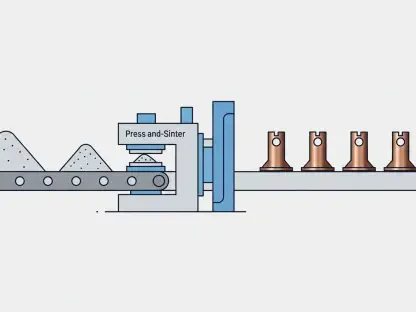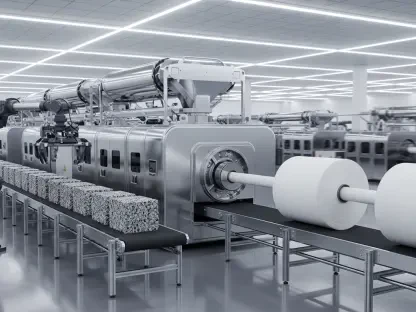In the aftermath of the Trump administration, the pharmaceutical industry is left navigating a complex landscape shaped by initiatives aimed at fostering domestic manufacturing. Intended to bolster the United States’ pharmaceutical production capabilities, these policies introduced through executive orders presented opportunities as well as significant challenges. The approach was not without its detractors, who pointed out the difficulty in balancing regulatory requirements with economic incentives—each a pivotal element in deciding the future direction of the industry. Industry players are now evaluating these changes and pondering their effect on investment strategies, supply chain resilience, and long-term competitiveness in the ever-evolving global market.
The Role of Fiscal Incentives and Regulatory Overhaul
Strategic Fiscal Initiatives
Central to the Trump administration’s strategy was the implementation of economic incentives designed to attract pharmaceutical manufacturing investments to the U.S. This tactic involved leveraging tariffs to make imports more expensive, thereby encouraging companies to reconsider their manufacturing footprint. The allure of reduced costs and streamlined operations persuaded several industry giants to commit financial resources to domestic production facilities. Nevertheless, the effectiveness of tariffs as a singular tool remains contested, as critiques underscore the potential for increased consumer prices and strained international relations.
Further enhancing this strategy involved making a series of strategic fiscal decisions, exemplified by Johnson & Johnson’s significant financial commitment, which anticipated both tangible economic gains and strengthened local employment. The company declared substantial investments, with plans to develop advanced production sites capable of accommodating cutting-edge pharmaceutical technologies. Such actions mirror broader industry trends, where corporations pursue innovative paths to maintain competitive advantage while responding to emerging geopolitical pressures and market fluctuations. These fiscal policies form part of a broader regulatory framework necessitating careful implementation to achieve their intended outcomes.
Regulatory Challenges and Adaptations
Complementing fiscal measures were regulatory adjustments intended to facilitate easier approval of domestic manufacturing facilities. The Trump administration issued executive orders directing the FDA to prioritize American-based operations, suggesting modifications to existing protocols. This included developing faster approval processes and reducing some procedural rigor, while simultaneously increasing scrutiny on foreign plants through heightened inspections and additional fees. These adjustments were aimed at streamlining operations while ultimately empowering local manufacturers to respond quickly to market demands.
However, adapting these regulatory changes into practice proved challenging. Concerns emerged from industry leaders and analysts alike, questioning the practicality of implementing an increased regulatory burden on foreign manufacturers and how evenly these policies would be enforced. Critics argued that rigorous inspections, while ensuring quality, could disrupt international collaborations critical to the sector. The pharmaceutical industry now finds itself in a balancing act, reconciling the complexities between domestic advantage and maintaining essential global partnerships. Exploring these dilemmas further showcases the multifaceted realities of molding policies to reflect both national interests and international obligations.
Emerging Patterns and Responses within the Industry
Corporate Investments Spark Economic Insight
Despite critiques surrounding profitability and execution, Trump’s policies catalyzed significant economic activity in the pharmaceutical sector. Influential corporations like Roche and Novartis responded by investing bilaterally to expand their footprint within the U.S., recognizing the opportunity to scale operations and capitalize on changing regulatory landscapes. These movements reflect broader strategic realignments aiming to hedge against supply chain unpredictability and secure operational agility under shifting geopolitical conditions. Substantial project announcements from these players included plans for comprehensive production facilities designed to house robust technological infrastructure and drive innovation.
Such corporate investments can spur economic growth and reshuffle the industry’s labor market, creating new job opportunities and fostering skills development. This influx of talent into burgeoning hubs solidifies the country’s status as a powerhouse in pharmaceutical research and development, blending world-leading scientific capabilities with established industrial practices. Analyzing the ramifications of this investment expansion further illuminates how corporations anticipate leveraging domestic capabilities to support a resilient supply chain poised to sustain itself amidst an increasingly intricate global pharmaceutical landscape.
Addressing Skepticism and Evaluating Effectiveness
While corporate investment is promising, skepticism regarding the policies’ comprehensive success persists among industry commentators and analysts. Questions surround the practicality of tariff-focused strategies, the validity of regulatory experiences, and apprehensions about long-term profitability. Notably, experts caution against relying on tariffs as a permanent solution, citing potential consumer burden and trade complications. The move toward domestic manufacturing has undeniably gained momentum, yet these critiques necessitate further consideration on how precisely policies translate into consistent benefits across the industry spectrum.
On the other hand, leaders within the sector acknowledge the potential of refining these policies to create complementary opportunities and sustain operational growth. This complex synthesis of regulatory amendments and fiscal incentives presents intricate challenges that pharmaceutical groups actively navigate in pursuit of maintaining market competitiveness and fulfilling evolving consumer demands. Establishing clear guidelines for developing policies, ensuring effective regulatory oversight, and fostering coordination between industry stakeholders could provide pivotal pathways for achieving the balanced objectives essential to long-term success.
Future Pathways and Strategic Considerations
Long-Term Tariff Viability and Infrastructure Impact
The role of tariffs remains central as industry leaders question their sustainability in creating favorable conditions for U.S. pharmaceutical manufacturing. Observations from experts suggest their implications might extend beyond short-term fiscal benefits to broader infrastructural developments, potentially altering the economic landscape of the sector. While initial successes catalyzed significant capital influx, extensive discussions currently revolve around the scope and direction of promising avenues that continuously evolve and adapt to emerging realities. Skepticism permeates stakeholder dialogues concerning how this instrument fosters ongoing industry advancement without unintended repercussions on international trade dynamics and consumer costs.
In parallel, companies continue to explore how to restructure operational frameworks, adapt to new regulations effectively, and address competitive pressures to ensure the seamless coexistence of diverse elements shaping their strategic vision. A clear path toward ensuring domestic manufacturing success revolves around evaluating alternative mechanisms alongside tariffs to reconcile fiscal needs, regulatory adjustments, and growth aspirations within robust infrastructural environments. This complex tapestry warrants thorough examination of localized economies, emerging consumer trends, and interconnected supply chains, embodying an advanced ecosystem capable of confronting future market challenges.
Navigating Shifting Geopolitical Landscapes
Pharmaceutical entities are increasingly compelled to anticipate evolving geopolitical trends while adapting their strategies accordingly. Responding to increased domestic production demand requires a nuanced understanding of implications that arise from global intricacies, which can impact supply chain logistics, intellectual property frameworks, and competitive relationships. Companies now seek innovative measures to address uncertainty while fostering transparent engagements with policy influencers responsible for crafting regulations and directives reflecting broader political and economic visions.
The pharmaceutical landscape continues to transform, intertwined with international complexities and evolving consumer expectations. Organizations endeavoring to traverse these shifts must concentrate on optimizing collaborative networks, maximizing technological innovations, and aligning strategic objectives with flexible adaptation procedures. Empowering industry leadership reinforces sector-wide resilience, promising a balanced, adaptable approach to navigating geopolitical transitions without diminishing established alliances or disconnecting from vital markets. Embracing technological advances and synergies present inherent potential, equipping entities to sustain momentum, thrive amid uncertainty, and contribute meaningfully to the broader global health narrative.
Evaluating Success and Future Trajectories
In the wake of the Trump administration, the pharmaceutical sector finds itself navigating a multifaceted landscape influenced by initiatives that aim to increase domestic manufacturing. These policies, structured through executive orders, seek to enhance the United States’ pharmaceutical production abilities, presenting both new avenues and formidable challenges. Critics have highlighted the difficulty in harmonizing regulatory requirements with economic incentives, both crucial in deciding the industry’s future path. Industry leaders are now assessing these changes to understand their impact on investment strategies, supply chain robustness, and sustained competitiveness in the dynamic global market. This situation requires careful consideration and strategic adjustment as stakeholders consider how best to optimize their operations amidst evolving demands and expectations. The intricate balancing act between maintaining regulatory compliance and pursuing economic gains continues to shape strategic thinking across the entire industry landscape.









